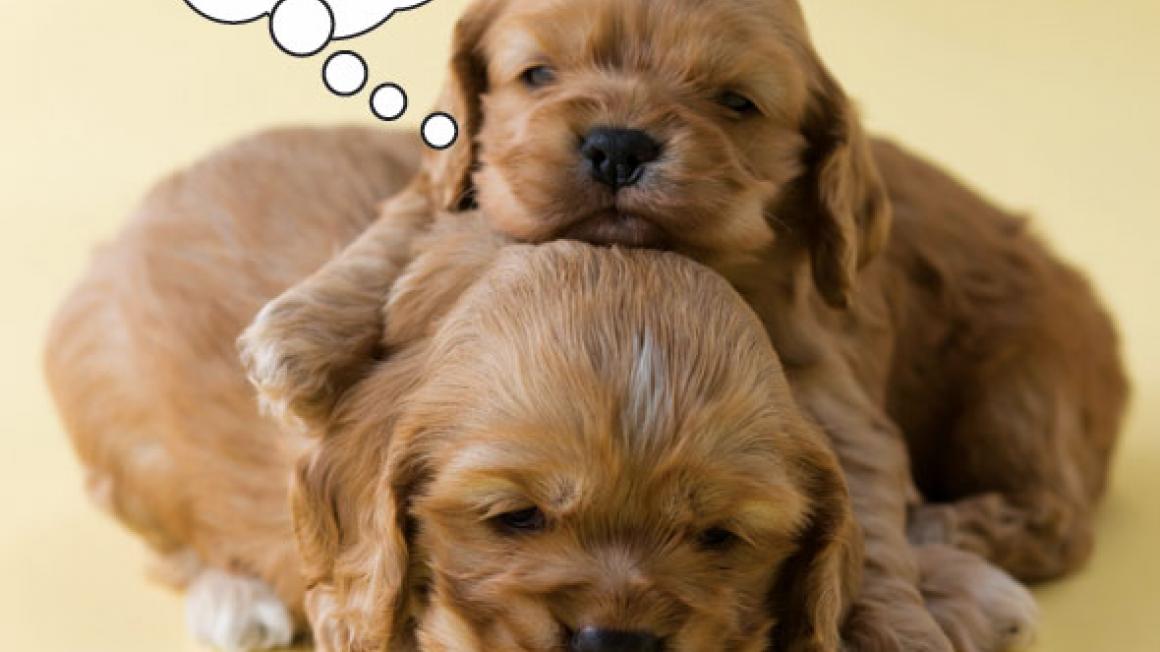Do dogs dream?
Many people believe that dogs do dream. Most dog owners have noticed that at various times during their sleep, some dogs may quiver, make leg twitches, or even growl or snap at a sleepcreated phantom, giving the impression that they’re dreaming about something. At the structural level, the brains of dogs are similar to those of humans. In addition, during sleep the brainwave patterns of dogs are similar to those of people, and they exhibit the same stages of electrical activity that are observed in humans – all of which is consistent with the idea that dogs are dreaming.
Actually, it would be more surprising if dogs didn’t dream, since recent evidence suggests that animals that are simpler and less intelligent than dogs seem to dream. Matthew Wilson and Kenway Louie of the Massachusetts Institute of Technology report that the brains of sleeping rats function in a way that irresistibly suggests dreaming.
Much of the dreaming you do at night is associated with the activities you engaged in that day. The same seems to be the case in rats. Thus, a rat that ran a complex maze during the day might be expected to dream about it at night. From electrical recordings of the rat hippocampus (an area of the brain that is associated with memory formation and storage) made while the rats were awake and learning a maze, Wilson and Louie found that some electrical patterns were quite specific and identifiable, depending on what the rat was doing. Later, when the rats were asleep and their brainwaves indicated that they had entered the stage in which humans normally dream, these same patterns of brainwaves appeared. In fact, the patterns were so clear and specific that the researchers were able to tell where in the maze the rat would be if it were awake, and whether it would be moving or standing still. Wilson cautiously described the results, saying, ‘The animal is certainly recalling memories of those events as they occurred during the awake state, and it is doing so during dream sleep and that’s just what people do when they dream.’
Since a dog’s brain is more complex than the rat’s and shows the same electrical sequences, it is reasonable to assume that dogs are dreaming as well. There is also evidence that they dream about common dog activities. This kind of research takes advantage of the fact that the brainstem (the pons) contains a special structure that keeps all of us from acting out our dreams.
When scientists removed or inactivated the part of the brain that suppresses acting out of dreams in dogs, they observed that the dogs began to move around, even though electrical recordings of the dogs’ brains indicated that they were still fast asleep. The dogs started to move only when the brain entered that stage of sleep associated with dreaming. During the course of a dream episode, these dogs actually began to execute the actions that they were performing in their dreams. For example, researchers found that a dreaming pointer may immediately start searching for game and may even go on point, a sleeping springer spaniel may flush an imaginary bird in its dreams, while a dreaming Doberman pinscher may pick a fight with a dream burglar.
It is really quite easy to determine when your dog is dreaming without resorting to brain surgery or electrical recordings. All you have to do is to watch the dog from the time he starts to doze off. As the dog’s sleep deepens, his breathing will become more regular. After about 20 minutes for an average-sized dog, the first dream should start. You will recognise the change because the dog’s breathing will become shallow and irregular. There may be odd muscle twitches, and you can even see the dog’s eyes moving behind closed eyelids if you look closely enough. The eyes are moving because the dog is actually looking at the dream images as if they were real images of the world. These eye movements are most characteristic of dreaming sleep. When human beings are awakened during this rapid eye movement (REM) sleep phase, they virtually always report that they were dreaming.
However, not all dogs dream the same way. It is an odd fact that small dogs have more dreams than big dogs. A dog as small as a toy poodle may dream once every 10 minutes, while a dog as large as a mastiff or a Great Dane may have about an hour between dreams. The difference is that the big dog’s dreams last longer.
Do Dogs Dream? Nearly Everything Your Dog Wants You To Know by Stanley Coren, is published by WW Norton & Company, priced £14.99.


